Wave – Vou Te Contar Jobim (guitar) with sheet music

TOM JOBIM
Brazilian songwriter and vocalist Antonio Carlos Jobim (1927–1994) was one of the creators of the subtle, whispery, jazz-influenced popular song style known as bossa nova. He has been widely acclaimed as one of Brazil’s greatest and most innovative musicians of the twentieth century.
Jobim’s place in the annals of popular music was secured by a single hit song, “The Girl from Ipanema” (1964), which he co-wrote with lyricist Vinícius de Moraes. His creative contributions to jazz, however, went much deeper; many of his songs became jazz standards, and, in the words of Richard S. Ginell of the All Music Guide , “Every other set” performed in jazz clubs “seems to contain at least one bossa nova.”
Jobim was sometimes called the George Gershwin of Brazil, not so much because of any musical or lyric similarity—Jobim’s songs tended to have oblique, often poetic lyrics quite unlike the clever romantic rhymes of George Gershwin’s brother Ira—but because his music became the bedrock for the work of jazz musicians for decades after its creation.
Studied with German Music Teacher
Antonio Carlos Brasileiro de Almeida Jobim, often known by the nickname Tom, was born in Rio de Janeiro on January 25, 1927. He grew up in the seaside southern Rio suburb of Ipanema, later the setting for his most famous song, and many of his compositions reflected Brazil’s lush natural world in one way or another. Both of Jobim’s parents were educators, and his father, Jorge Jobim, was also active as a diplomat.
But Jobim took after an uncle who played classical guitar, and he soon showed unusual talent of his own. Jobim’s mother, Nilza, rented a piano for the family home, and when Jobim was 14 he began piano lessons with Hans Joachim Koellrutter, a local music scholar of German background who favored the latest experimental trends in European classical music.
Please, subscribe to our Library.
If you are already a subscriber, please, check our NEW SCORES’ page every month for new sheet music. THANK YOU!
Jobim would later point to the influence exerted by French Impressionist composers Claude Debussy and Maurice Ravel on his own music, but a new set of influences was on its way to Brazil in the form of American jazz. Jobim enrolled in architecture school, lasted less than a year, and worked as an assistant to a local architect in the early 1940s.
His real energies were directed toward music, as he gained experience playing piano in small nightclubs known as inferninhos , or little infernos. Visits to Rio by the Duke Ellington Orchestra and other American jazz bands shaped Jobim’s own attempts at composition (which he buried in a drawer at first) and inspired him to settle on a musical career. In 1949 he married his first wife, Thereza Hermanny; they raised a son, Paulo, and a daughter, Elisabeth.

With his well-rounded musical education, by the early 1950s Jobim was able to graduate from Rio’s bars to staff arranging positions with the Continental and Odeon record labels. At this point Jobim was working in the genre of samba, Brazil’s national pop song style, and he sometimes performed his own samba compositions.
His real breakthrough came about in 1956, as the result of a chance meeting two years earlier with Brazilian playwright Vinícius de Moraes. Moraes was working on a play called Orfeu da Conceicção , which was later filmed as Orfeu Negro (Black Orpheus). The play and film transferred the classic Greek myth of Orpheus and Eurydice to modern-day Rio de Janeiro, and Moraes suggested that Jobim write the music for it.
The film Orfeu Negro became an international success, and Jobim’s score, featuring guitarist Luiz Bonfá, kicked off a new musical craze that quickly spread beyond Brazil. It was based in samba rhythms, but it featured subtle harmonic shadings drawn from jazz.
The new style was given the name bossa nova, meaning “new wave,” and the 1958 single “Chega de Saudade” (No More Blues), with music by Jobim, words by Moraes, and guitar by future Brazilian pop star João Gilberto, was the style’s first major hit. Both “Chega de Saudade” and the flip side of the original single, Jobim’s composition “Desafinado” (Out of Tune), have remained jazz standards.
Performed in New York
Jobim’s star rose quickly in Brazil after the release of “Chega de Saudade.” He continued to record with Gilberto, began hosting a weekly television show called O Bom Tom , and wrote music in which he drew on his classical background for the soundtrack to a film called Por Toda a Minha Vida and (with Moraes) Brasîlia, Sinfonia da Alvorada , a four-movement orchestral work with text.
By 1962 American jazz musicians had begun to immerse themselves in bossa nova. Jobim sang his “Samba de uma nota só” (One-Note Samba) on an album by Gilberto and jazz flutist Herbie Mann. The bossa nova phenomenon reached the United States as saxophonist Stan Getz and guitarist Charlie Byrd recorded their successful Jazz Samba album, and in November of 1962 Jobim and other Brazilian musicians performed a major bossa nova concert at New York’s Carnegie Hall. The show was the idea of a Brazilian diplomat who wanted to promote the country’s musical accomplishments abroad.
Best Sheet Music download from our Library.
The concert initially seemed to be a flop. The Brazilian players were thrown off their stride by New York’s miserable late fall weather, and critics panned the show. Jobim and his compatriots also took criticism from Brazilian observers who felt they were diluting Brazilian music by singing songs in English—Jobim, who spoke several languages, sometimes translated his own songs from Portuguese into English, while others were translated by jazz writer Gene Lees. Nevertheless, the Carnegie Hall concert succeeded in exposing Jobim to American musicians and music industry figures.

Jobim recognized the importance of American exposure in broadening the reach of his music, and he quipped that if he had remained in Brazil, he would still just be drinking beer in Rio’s corner bars. In 1963 he made his U.S. recording debut on the Verve label with The Composer of Desafinado Plays.
Jobim followed up that release with several more albums in a smooth jazz vein. He collaborated with one of his most influential American admirers on a successful 1966 release, Francis Albert Sinatra & Antonio Carlos Jobim , which was seldom if ever out of print during the next four decades. Jobim sang, played piano, and occasionally strummed a guitar on these recordings, often backed by a small orchestra.
In 1962 Jobim composed a song that was soon to become a worldwide phenomenon, and in the process he added a phrase to the international lexicon. “The Girl from Ipanema” (in Portuguese, “Garota de Ipanema”) was written as Jobim and Moraes were sitting at a table in a bar in Jobim’s hometown of Ipanema and became infatuated with a passer-by, the “tall and tan and young and lovely” woman described in the song. With a vocal by Gilberto’s wife, Astrud, and a verse of English lyrics, the song became a number-two hit in the United States in 1964, eclipsed only by the Beatles’ “A Hard Day’s Night.”
Jobim prospered, although he was never canny about the music publishing deals he signed, and he often failed to receive a proper share of the money his songs earned.
Jobim’s total output of albums was not large (he recorded ten solo albums, plus nine more with collaborators), but his music remained consistently successful through much of the 1960s.
Nothing else became a hit on the scale of “The Girl from Ipanema,” but such songs as “Wave,” “Insensatez” (How Insensitive), and “Meditation,” with vocals by Jobim himself, Astrud Gilberto, or other singers, became part of the record collections of many sophisticates, and were internalized by jazz musicians as quickly as they appeared. Jobim maintained a strong following in Brazil, thanks to duets recorded with female vocalist Elis Regina, and his 1968 album A Certain Mr. Jobim reached the top 15 on Billboard magazine’s jazz sales chart in the United States.
Branched Out Beyond Bossa Nova
Jobim’s popularity dipped in the 1970s as bossa nova finally ran out of steam commercially, but he never really slowed down creatively. One of his most widely covered songs of the decade was 1972’s “Aguas de Março,” which Jobim himself translated into English (with added lyrics) as “Waters of March”; the English version almost completely avoided words with roots in Romance languages (such as Portuguese) in favor of those of Germanic origin. The lyrics consisted of a seemingly disconnected series of images that suggested the impermanence of life.
The influential jazz critic Leonard Feather, according to Mark Holston of Americas , placed “Waters of March” “among the top ten songs of all time.” Jobim recorded with Brazilian-born arranger Eumir Deodato on his Stone Flower album of 1970, and he also often worked with German-born arranger Claus Ogerman. Jobim’s 1975 album Urubu (meaning “The Vulture”) reflected his personal fascination with that bird of prey.
In 1976 Jobim met 19-year-old photographer Ana Beatriz Lontra; the pair had a son, João Francisco, in 1979, married in 1986, and had a daughter, Maria Luiza Helena, in 1987. In the late 1970s Jobim was active mostly in film soundtracks, but in 1984 he assembled his Nova Banda or New Band, with his son Paulo on guitar, and began touring once again.
His concerts in the United States in the mid-1980s were in venues with the highest profiles: Carnegie Hall and Avery Fisher Hall in New York, and Constitution Hall in Washington. His 1987 release Passarim was as well received in the jazz community as any of his 1960s releases had been, and selections from it appeared on several posthumous collections of his work.
Critics by this time recognized Jobim as a living legend, and he received various awards of national and international scope in the last years of his life. These included the Diploma of Honor, the highest arts award given by the Organization of American States, which he received in 1988, and induction into the Songwriters’ Hall of Fame in 1991.
Jobim never rested on his laurels, and he entered the mid-1990s with a full plate of creative projects. He worked with classical conductor Ettore Stratta in preparing recordings of some of his more classical-oriented works, and he planned to record an album with opera star Kathleen Battle. In 1994 Jobim released a new album, Antonio Brasileiro , and rejoined Frank Sinatra for a track on Sinatra’s Duets II release.
With these career capstones in the works, it came as a shock for Jobim’s admirers in both the United States and Brazil when Jobim died suddenly of heart failure at New York’s Mount Sinai Hospital on December 8, 1994, shortly after entering the facility for treatment of cardiac disease. Jobim’s body was returned to Brazil, where a funeral parade held in his honor in Rio de Janeiro lasted for four hours, and he was buried in a tomb near that of Vinícius de Moraes, who had died in 1980.
The pair had created two of the icons of twentieth-century culture, Black Orpheus and “The Girl from Ipanema,” and the music that came from Jobim’s pen lent the music of much of the century’s second half a distinct Brazilian tinge.
Browse in the Library:
| Artist or Composer / Score name | Cover | List of Contents |
|---|---|---|
| Will B. Morrison – Melody in F (Syncopated Waltz) sheet music |
 |
|
| Will Young – Anything Is Possible | ||
| William Best I Love You For Sentimental Reasons (Jazz Standard) | William Best I Love You For Sentimental Reasons (Jazz Standard) | |
| William Eveleth – Blues Jazz and Rock Riffs For Keyboards |
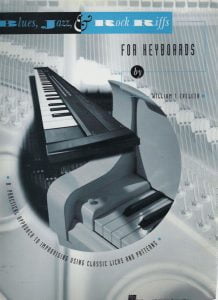 |
|
| William Gillock In Old Vienna Musescore File.mscz | ||
| William Gillock Valse Etude In Romantic Style Musescore File.mscz | ||
| William Joseph – Within (Songbook) (William Joseph) |
 |
William Joseph – Within (Songbook) (William Joseph) |
| William Robinson – My Girl | ||
| William Russo Composing Music A New Approach (ebook) |
 |
|
| Willie Dixon Preacher Of The Blues (2011) Mitsutoshi Inaba (Book) Biography |
 |
|
| Willie Fugal S Blues Piano transcription |
 |
|
| Willie Nelson – Always on My Mind Sheet Music |
 |
|
| Willie Nelson – On My Mind | ||
| Willie The Lion Smith – Finger Buster transcription |
 |
|
| Willie The Lion Smith Echo of Spring transcription |
 |
|
| Willow Weep For Me Words And Music By Ann Ronell 1932 Jazz Standard (Vintage sheet music) |
 |
|
| Wim Mertens – American Minimal Music La Monte Young Terry Riley Steve Reich Philip Glass |
 |
Book La Monte Young Terry Riley Steve Reich Philip Glass |
| Wim Mertens – Close Cover | Wim Mertens – Close Cover | |
| Wim Mertens – Struggle For Pleasure | Wim Mertens – Struggle For Pleasure | |
| Wim Mertens – Time Passing |
 |
|
| Wim Mertens Humility |
 |
|
| Wim Mertens Lir |
 |
|
| Windham Hill piano sampler |
 |
Windham Hill piano sampler |
| Windy Whistle (Le Renard et l’Enfant OST) Alice Lewis | ||
| Wings (McCartney) – Greatest Hits |
 |
Wings sheet music |
| Winifred Atwell Album Of Rags No 1 Original arrangements Vintage songbook |
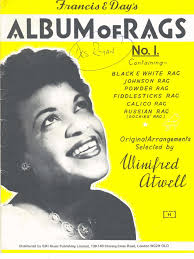 |
Winifred Atwell Album Of Rags No 1 Original arrangements Vintage songbook |
| Winifred Atwell Marguerite Monnot The Poor People Of Paris ( La Goualante Du Pauvre Jean) Piano Solo |
 |
|
| Winnie The Pooh The Honey Tree Sheet Music (Disney) |
 |
Winnie The Pooh The Honey Tree Sheet Music (Disney) |
| Winter Sonata O.S.T. (Ryu) | ||
| Winter Wonderland Other Christmas Favorites Songbook Piano Vocal guitar Chords |
 |
Winter Wonderland and Other Christmas Favorites Songbook Piano Vocal guitar Chords |
| Wish You Were Here – Pink Floyd (Musescore File).mscz | ||
| Within Temptation – Our Solemn Hour | ||
| Without you (Maria Carey) | ||
| Without You (Mariah Carey Piano Arr ) (Musescore File).mscz | ||
| Wiz Khalifa & Charlie Puth See You Again (Solo Piano) |
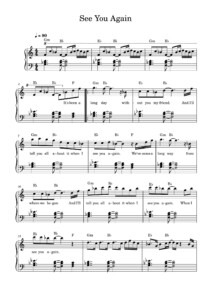 |
|
| Wolf Wagner Paraphrase Über Die Walküre |
 |
|
| Wolfe Richard Legit Professional Fake Book More Than 1010 Songs |
 |
Wolfe Richard Legit Professional Fake Book More Than 1010 Songs |
| Wolfenzon – Stücke für Klavier | Wolfenzon – Stücke für Klavier | |
| Womack, Bobby – Midnight Mover My Autobiography The True Story of the Greatest Soul Singer in the World (Book) |
 |
|
| Woman in love (Barbra Streisand) | ||
| Women Of Pop Rock Songbook Twenty-Two Hot Hits for Easy Piano |
 |
Women Of Pop Rock Songbook Twenty-Two Hot Hits for Easy Piano |
| Wonderful Christmastime -Paul Mccartney (Wings) (Musescore File).mscz | ||
| Wonderful Life – Black (Easy Piano Solo Sheet Music) (Musescore File).mscz | ||
| Woody Allen – A propósito de nada (autobiografía)(2020) |
 |
|
| Woody Allen – Apropos of Nothing (2020) Autobiography | Woody Allen – Apropos of Nothing-Simon and Schuster (2020) Cover | |
| Woody Guthrie This Land Is Your Land (Easy and Intermediate Piano Solo) |
 |
|
| World Hits Of Jazz Standard |
 |
World Hits Of Jazz Standard |
| Wuthering Heights (Ryuichi Sakamoto) | ||
| Wynton Kelly – Autumn Leaves Solo transcription | Wynton Kelly – Autumn Leaves Solo transcription | |
| Wynton Kelly – Dark Eyes Solo Piano transcription |
 |
|
| Wynton Kelly – Dark Eyes Solo Piano Transcription (Musescore File).mscz | ||
| Wynton Kelly – Full transcriptions | Wynton Kelly – Full transcriptions | |
| Wynton Kelly – I Dig of You Solo transcription |
 |
|
| Wynton Kelly – If I should Love You Solo transcription |
 |
|
| Wynton Kelly – Jazz Piano Collection |
 |
Wynton Kelly Piano Collection- |
| Wynton Kelly – Someday my prince will come (Piano solo) |
 |
|
| Wynton Marsalis Trumpet Genius Gourse, Leslie (Book) |
 |
|
| Wynton Marsalis – Caravan (Solo) |
 |
|
| Wynton Marsalis – Darn That Dream (Solo) | Wynton Marsalis – Darn That Dream (Solo) | |
| Wynton Marsalis – Dealfayos Dillema (Solo) |
 |
|
| Wynton Marsalis – Standards (sheet music transcriptions) |
 |
Wynton Marsales – Standards (sheet music transcriptions) |
| Wynton Marsalis In The Court Of King Oliver (Trumpet and rhythm section) |
 |
|
| Wynton Marsalis Omnibook For B Flat Instruments Transcribed exactly from his recorded solos |
 |
Wynton Marsalis Omnibook For B Flat Instruments Transcribed exactly from his recorded solos |
| Wynton Marsalis Struttin’ With Some Barbeque (Live) Wynton Marsalis’ Trumpet Solo |
 |
|
| Xenoblade Chronicles 2 Loneliness Kenji Hiramatsu | Xenoblade Chronicles Opening Theme Game sheet music | |
| Xenoblade Chronicles Opening Theme Game sheet music Yoko Shimomura |
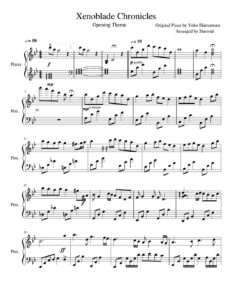 |
|
| Yamaha E443 Songbook digital keyboard PSR-E443 |
 |
|
| Yamaha Keyboard Songbook |
 |
Yamaha Keyboard Songbook |
| Yamaha Keyboard Songbook Song-Buch |
 |
|
| Yamaha PSR E373 YPT-370 PSR-EW310 Song book |
 |
|
| Yamaha Song Book |
 |
Yamaha Song Book |
| Yamaha Song book |
 |
Yamaha Songbook |
| Yamaha Songbook |
 |
Yamaha-Songbook |
| Yamaha songbook 50 Piano Greats for the piano (Yamaha collection) |
 |
50 Piano Greats for the piano (Yamaha collection) |
| Yamaha Songbook Contemporary Vol. 1 |
 |
Yamaha Songbook Contemporary Vol. 1 |
| Yana Bobalik Mysterious Music Я.Бобалік Songbook |
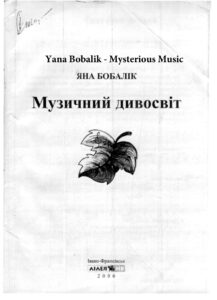 |
|
| Yana Bobalik Secret Music From Mysterious Music Я.Бобалік Таемна Музыка |
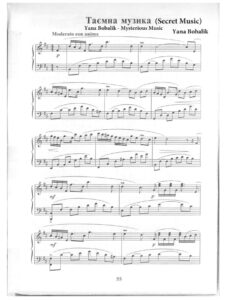 |
|
| Yann Tiersen Rue des Cascades (sheet music) | yann tiersen cascades sheet-music | |
| Yann Tiersen Mother’s Journey |
 |
|
| Yann Tiersen – Tabarly Sheet Music |
 |
|
| Yann Tiersen – Comptine Dun Autre ete | ||
| Yann Tiersen – La Dispute – Amelie Poulain | ||
| Yann Tiersen – La Valse d’Amelie Poulain | Yann Tiersen – La Valse Damelie | |
| Yann Tiersen – Le moulin – Amelie Poulain | Le Moulin – Amelie Poulain | |
| Yann Tiersen – Six pièces pour piano – Volume 2 – Amélie Poulain |
 |
Yann Tiersen – Six pieces pour piano – Volume 2 – Music Sheet |
| Yann Tiersen – Summer 78 | ||
| Yann Tiersen – Sur Le Fil |
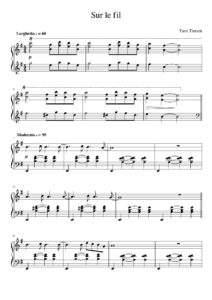 |
|
| Yann Tiersen – Pièces pour piano vol 1 et 2 + divers |
 |
Yann Tiersen – pièces pour piano vol 1 et 2 + divers  |
| Yann Tiersen Eusa 2015 Songbook |
 |
|
| Yann Tiersen J’Y Suis Jamais Alle piano solo (Amélie) |
 |
|
| Yann Tiersen Onze Pièces Pour Piano |
 |
Yann Tiersen Onze Pièces Pour Piano |
| Yann Tiersen Partitions intégrales Piano Works 1993-2004 | Yann Tiersen Partitions intégrales Piano Works 1993-2004 | |
| Yann Tiersen Tabarly Complete Book For Piano |
 |
|
| Yanni In My Time (Piano Solos) Sheet Music |
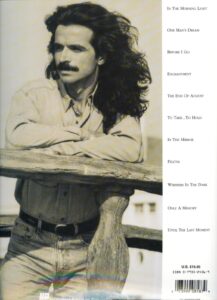 |
Yanni In my time piano solos |
| Yanni One Man’s Dream |
 |
|
| Yanni – Per Piano (Piano book) |
 |
Yanni – Per Piano |
| Yanni – In The Morning Light | ||
| Yanni – Nostalgia | ||
| Yanni – One Man’s Dream (Musescore File).mscz | ||
| Yanni -The Best of |
 |
 |
| Yanni Ethnicity Book |
 |
Yanni Ethnicity Book |
| Yaron Herman – Hallelujah (Leonard Cohen) transcription |
 |
|
| Yashal (Elisa) | ||
| Yasuharu Takanashi – Naruto Shippuden OST – Loneliness |
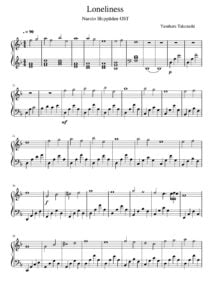 |
|
| Yedidia, Ronn Piano Sonata No 3 outcries (manuscrit) |
 |
|
| Yehezkel Raz Ballerina Piano Solo sheet music |
 |
|
| YES Fragile |
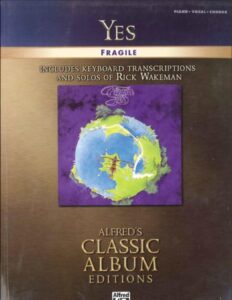 |
YES Fragile |
| YES – Complete Deluxe Edition |
 |
YES – Complete Deluxe Edition |
| Yes Close To The Edge The Story Of Yes (Book) |
 |
|
| Yes The Best Of Guitar Songbook with TABs |
 |
Yes The Best Of Guitar Songbook |
| Yesterday Piano Cello – Piano Sheet Music – Paul McCartney |
 |
|
| Yesterday Piano vocal guitar Songbook Featuring Music From the OST |
 |
|
| Yesterday The Beatles For Jazz Piano (Musescore File).mscz | ||
| Yesterday when I was young (Charles Aznavour) | ||
| Yimkin Law ( Et maintenant on va où OST) Racha Rizk | ||
| Yiruma – 27 May | ||
| Yiruma – Destiny Of Love | ||
| Yiruma – Dream | ||
| Yiruma – Dream A Little Dream Of Me | Yiruma – Dream A Little Dream Of Me | |
| Yiruma – Falling |
